In many situations, reverse osmosis systems are necessary for purifying water, but reverse osmosis systems happen to reject a lot of water. Most reverse osmosis systems waste up to 3 gallons of water for every 1 gallon of water they purify.
Facing water shortages and rising water prices in many regions of the world, you might be reluctant to flush the reject water down the drain. So, what can you do? Here are 10 reverse osmosis waste water uses to reduce overall wastage, along with practical handling tips.
The issue with RO waste water
The rejected water by reverse osmosis has high TDS (Total Dissolved Solids) levels. These include inorganic salts and some organic salts. In addition to the salts, there are many metallic and non-metallic compounds, which are eliminated from the tap water and get accumulated in the water which the machines drain off.
These contaminants make this water undrinkable and unsafe not only for humans but for animals as well. And this is the reason most of the water directly gets drained and is overlooked.
However, these factors don’t make the rejected water unusable. Instead of wasting the rejected water, you can make some simple efforts and reuse reverse osmosis waste water.
Before we look some interesting life hacks to utilize RO waste water, remember one important common aspect for all its uses: The waste water is very high in minerals and salts and for its use it is always advisable to mix it with normal tap water so that the amount of mineral and salts gets balanced.
10 ways to reuse reverse osmosis waste water
Here are our 10 suggestions what to do with RO reject water:
1. Use RO waste water for mopping and cleaning floors
Mopping floors every day is a necessity to keep the surfaces where you work or live free of dust, bacteria, and infections. A rough estimation is that any family needs twice the drinking water for mopping and cleaning surfaces – that’s a lot.
You can use RO waste water for this very purposes in your houses and as well your workplaces instead. Mix the rejected RO water with some fresh water first. The soaps, detergents, and acids will not mix properly in hard RO water and, more importantly, plain RO waste water will leave salt particles and other mineral particles on the floor. This can cause corrosion of floor tiles, and the tiles can lose shine if subjected to high mineral content water.
2. Use RO waste water to flush toilets
This is the best use for RO waste water.
Flushing toilets require a lot of water. An Ultra Low Flush toilet flushes at a maximum of 1.6 gallons (ca. 6 l) per flush. Older toilet use up to 7 gallons (ca. 26 l) per flush. Because of high water wastage in toilet flushes, the Federal law currently mandates that all toilets manufactured in the U.S. must use an average of 1.6 gallons (ca. 6 l) per flush or less.
So use the rejected RO water to flush toilets and simultaneously do your role in conserving water. The best thing you can do is directly connect your waste RO water pipe to the toilet flushing pipe. How clever it is to recycle a waste product to eliminate another waste product!
However, when using the rejected water for cleaning of porcelain tiles and fixtures, check for any discoloration. In case you notice any, do not use additional acids to clean toilets because discoloration is an indication that RO waste water is doing its job superbly. You can use air-fresheners because this water will not help in cleaning the fragrance.
3. Use RO waste water to wash your car
A commercial car wash uses 9 to 15 gallons (ca. 34-57 l) to clean a vehicle. People who wash their car at home, use 40 140 gallons (ca. 150-530 l) each time. It is estimated that a car requires a wash every two weeks. (This does not apply to eastern countries).
And if you are using fresh water or tap water for a car wash, then you are wasting a lot of water, especially if you use a hose pipe. Only half of the pipe’s waster is actually used in the wash, and the other half is a complete waste.
A better alternative than fresh water and to save all this waste is using the RO waste water.
Before you attach the RO waste water pipe to your car wash cleaning faucet, take note that you do not use a scrub or brush if you are using hard water. Instead, use a soft linen cloth because the water itself will do the work of a brush. Secondly, the force of the water should be minimal. The car should never be sprayed sharply with this kind of water.
4. Use RO waste water to clean utensils
This again can be termed as one of the best utilities for RO waste water, primarily because washing utensils and cleaning sinks require a lot of water and secondly if they are cleaned with hard water they get cleaned better.
So, the Waste RO water can be best used to wash off utensils sinks because salt content in it does not let left food get stick to utensils.
Use this water for rinsing the utensils and not for scrubbing. The salt environment will clean the utensils from all food and oily acidic particles. Then scrub the utensils with fresh low mineral tap water, as there is a chance that metallic utensils will lose their luster and plastic utensils get coarse if scrubbed by hard water.
5. Use RO waste water for laundry
Another excellent use of this water is to wash clothes because RO water is perfect with all the needed salt contents to take dirt away. In fact, most of the detergents made for washing clothes are rich in the salts and chemicals which are already available in RO water, especially sodium salts!
You can use this water for laundry; however, avoid washing delicate fabrics, as they may not react well with the TDS content and other metallic materials present in the rejected water.
6. Use RO waste water to clean sewage pipes
The RO reject water can be used to clean sewage pipe at home or kitchen because of its saline nature. The pipes become greasy due to prolonged buttery and oily wastes. A little mixture of a dilute acid and RO water can do the required work. The waste RO water can also be used to remove the hard residual water which might have clogged in other appliances.
7. Use RO waste water to boil eggs (and other foods)
You can also use the rejected RO water to boil eggs. This is a real smart and biological use. The water does not come in contact with the edible portion of the eggs, so no contaminants are ever going to be deposited on your food!
This is not limited just to boil eggs! Anything that has a casing or shell and is not coming in contact with the edible portions can be warmed or heated using RO water. For example, some people prefer eating fruits after heating them, so fruits having shells or hard skins like oranges can be heated in Luke warm RO water.
Also read: Is reverse osmosis water good for pets to drink?
8. Use RO waste water for gardening (watering plants)
Is RO reject water good for plants? Before you use RO water for gardening, please continue to read a little science.
RO rejected water can be used to water plants; in fact, it is an ideal choice. But this is when the (regular tap) water you are receiving is low in TDS. Most of the urban areas receive water that is low in TDS, so that makes it the apt choice for plant watering, as plants need mineral rich water. Most of the minerals which are in the water are essential for plant growth, and plants absorb them from the ground below.
But if the water has a high TDS or has carcinogenic metal compounds, then the same water becomes poison for the plants. The heavy metals will burn them.
So to be on the safer side, before using the water for your plants, ensure that the TDS level is not very high. Secondly, mix the low TDS water with fresh tap water to balance out the mineral. And lastly, check the quality of the water and its effect on each of your plants.
Water on each variety for a few days and measure its growth and general health. This will give you an understanding about which plants are responding better to hard water.
Also read: The best reverse osmosis systems for hydroponics
9. Use RO waste water for irrigation
Wasted RO water can be used for irrigation, and you need to take all the cautious steps which we discussed in the gardening section above. Briefly, you need to use low TDS water and that too mixed with fresh water. You can examine the effect of this water on different crops because certain crops grow well in hard water.
Remember: High TDS water should never be used for irrigation and not for gardening too as it has severe adverse effects on vegetables and products which are eaten raw.
10. Can reverse osmosis waste water be used for bathing?
This is one of a hot topic and a lot of debate is available on this. Some support that one can bathe with the RO waste water after mixing some plain water as it gives you a saline touch.
Others completely reject the idea of hard water touching human skin.
Their argument is: RO reject water is very high on hardness. RO removes hardness from your drinking water and concentrates it in the reject water.
And high hardness can cause certain skin problems. Especially itching, skin redness and irritation in eyes can be commonly observed. Secondly, it accelerates hair fall. And some argue that you don’t get the feeling of freshness if you use hard water, as even the soap does not foam.
Scientifically, many studies have been conducted on this topic, and it has also produced mixed results. Some doctors actually suggest using specific bath salts for the betterment of your skin. They say that like plants, even human bodies absorb some minerals and salts via their skin.
Bathing or not remains every individual’s personal choice. If he or she feels that hard water suits their needs best, then they can use RO waste water for this purpose by diluting it. It will save them from bath salts. And if the water is having an adverse effect, then this stunt should never be tried.
Also read: The best shower filters for your bathroom
Reusing, reprocessing and recycling reverse osmosis waste water
We already looked how we can reuse the contaminated water in local households, but the reality is that it does not make a huge difference in the conservation of the large volume of waste water.
RO remains as the best and most effective method for fresh drinking water. However, recent concern over RO waste water and its volume, has given rise to many studies and researches suggesting how to conserve and treat the discarded water from these essential household equipments.
Water treatment and purification is an old science and there are many effective ways that can come in use. Let us briefly look how some technologies can actually be very useful in the conservation process.
Zero waste water RO systems
Even the RO manufacturers have realized the problem of overly water waste and are working to design no water wastage or zero water wastage models. These machines have very high recovery rate where more than 50% of input water is recovered again and reprocessed a second time to produce pure water from the waste water.
To further ensure that no water is wasted during, these models are designed with two separate tanks. One is for the storage of the purified water and the other tank stores the rejected water. The second tank can be connected to any other appliance in which this waste water can be utilised. But it is advisable that the water from the second tank should be diluted with some tap water.
Evaporation
Evaporation is a time-tested methodology for reducing the water portion of water-based wastes. The evaporator converts the H2O from the water-based waste to vapor, while leaving the higher boiling contaminants behind.
If the RO waste water can be channelized properly and collected in large public reservoirs, then this method can become very effective. RO waste water is not dirty water (in terms of quality), it’s just that its hardness or mineral content is different. So, it is not wrong to feed it to a nearby rainwater harvesting system where evaporation does its work, specially in summers.
It will be beneficial to the environment as the benefit of the evaporated water will again be yielded by the locality itself. The only requirement is that the waste RO water should not be drained into sewers, as then this water becomes useless and evaporation can have no effect on it.
An important benefit of this method is that it requires low labor and hence becomes the most economic mode for the purpose. Secondly, Evaporation technology can handle a much wider range of waste streams compared to membranes and traditional physical and chemical treatment methodologies.
The waste that remains can be further processed, as the salts and other organic minerals can be used as fertilizers for plants and crops. Mechanical Vapour Compression Evaporators and Thermal Evaporators have proven to be effective technologies for dewatering RO concentrate waste streams.
Reusing the RO waste as the source water for a second RO machine
Another good possibility is to reuse the reject water from an RO system by feeding it directly into a 2nd RO unit. This way, 20% of the water can be directly saved, as the second RO machine will again produce 20% fresh water from the supplied waste RO water.
However, the likelihood of scaling of the 2nd RO unit increases as the water the 2nd RO machine receives has very high TDS and many contaminants. It becomes necessary that the 2nd machine should be pre-treated.
A Tubular Membrane Filter (TMF) system coupled with lime softening can reduce scaling and fouling of the 2nd RO machine and enhance its operation as well. The silver lining to this treatment technique is its recovery rate. Recovery rates increase many folds, and are around >95%! Lime softening ensures the health of the machine, and no substantial reduction due to scaling is observed in the RO purifiers.
With the increasing cost of water and waste discharge, many companies are using this technique. It is an efficient and cost-effective method for either retrofitting existing RO systems or for the incorporation of the process into newly designed systems. The reality is that some companies are actually doing business by setting up huge RO plants having Tubular Membrane Filter.
Desalination of RO Waste Water
RO is actually a method to desalinate the tap water, but it also opens up a study whether the concentrate disposal of RO water can be further desalinated or not.
Desalination of unconventional water resources is becoming common as drinking water supplies are getting deteriorated. But desalination comes with a price because heavy cost and energy is required. If the costs are decreased, then it becomes feasible to desalinate RO wastes. One of the approaches to make desalination cost-effective is extraction of valuable commodities from RO wastes.
Although the extraction of various compounds like sodium, chlorine, potassium, and magnesium from this kind of water is technically viable, profitability can be a concern considering the current market positions.
A study was conducted regarding the profitability issue. It suggested that the extraction of these commodities can yield good profit if the extraction is highly dependent on commodity pricing and final product purity, which can make Desalination a future technique for RO waste water conservation.
Electrodialysis
Electrodialysis is another method to conserve RO waste water. Experiments on this technique demonstrated to have an efficiency of over 80% reprocessing of the wastes, while using minimal voltages. And using low voltages means low required energy, which eventually means low costs. This method does not only reduce the waste volume, but also provides additional feed for modern RO systems.
Conclusion
Globally we are experiencing acute water shortage and the future environmental conditions do not predict favorable conditions for water supplies. The amount of water available on Earth is also getting reduced due to global warming and other environmental hazards.
Conditions like these increases our responsibility and highlights that our approach towards the utilization of the water is a significant step for us and for the future generations’ welfare. And wasting something despite having reuse alternatives is totally immoral.
RO waste water reuse, reprocessing and recycling is possible and the above-mentioned activities are not unreal. It then becomes our duty as the citizens of mother Earth to make the most of whatever water Reverse Osmosis Water purifiers generate and use every drop of water efficiently.
Also read: Water filtration methods: 5 alternatives to reverse osmosis
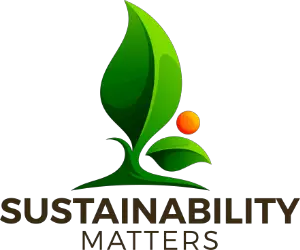
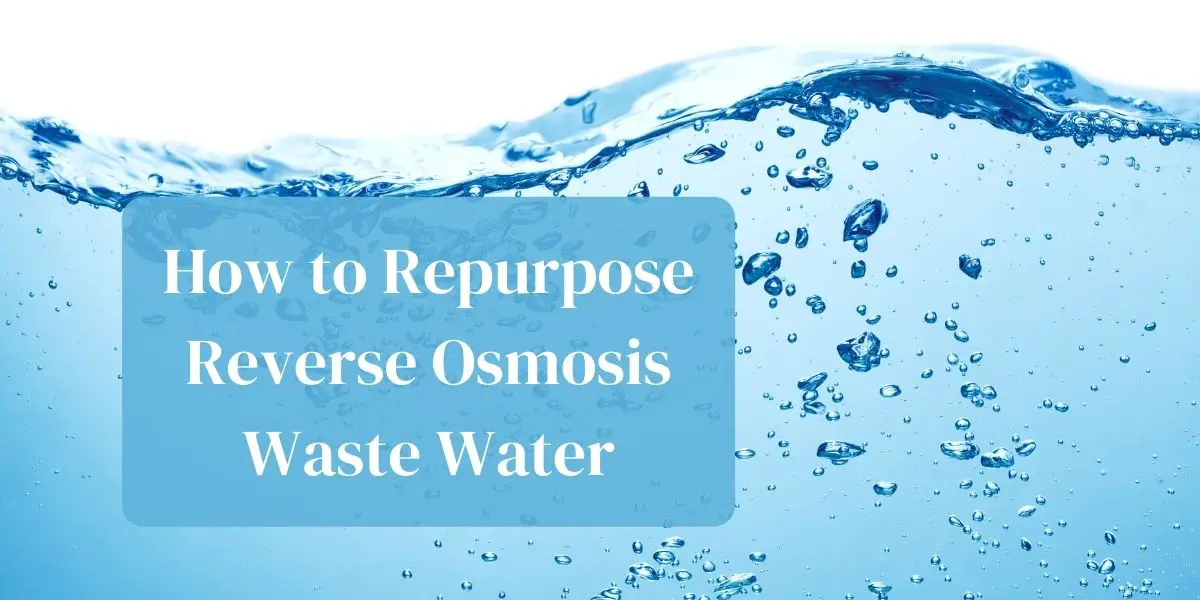

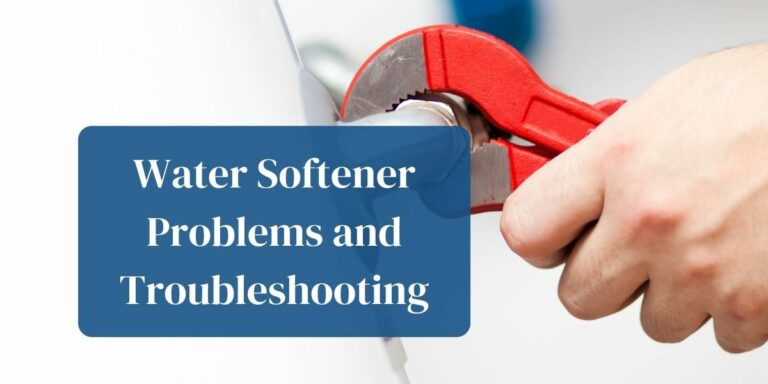
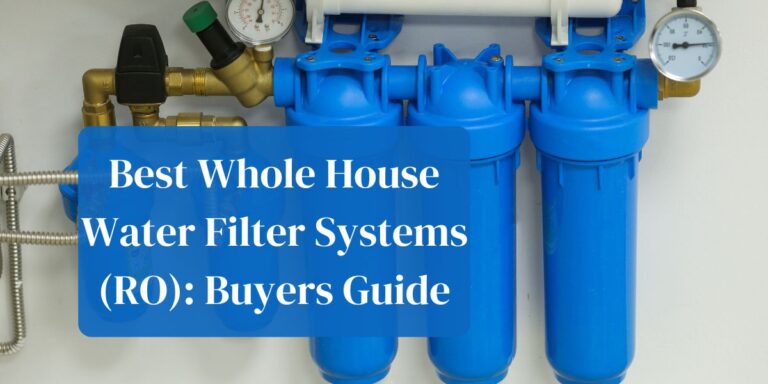
![Full Review: Xiaomi [Mi] Air Purifier to combat Air Pollution](https://sustainabilitymattersdaily.com/wp-content/uploads/2018/09/Climate-change-misconceptions-1.png)
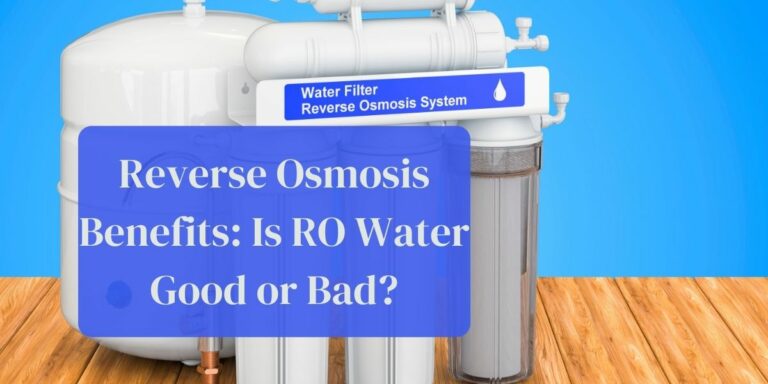
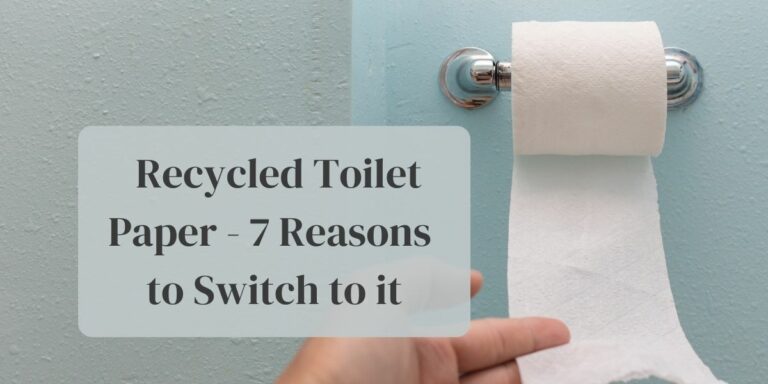

In fact very good suggestions, however, industry is always looking for solutions with economics. Huge quantities of RO reject are going into waste water lines just un-utilized. Someone may provided a table on, for example if the TDS is in 1000-3000 mg/L Do this. If it is between 3001 and 7000 mg/L, these are our choices, and finally what are the choices for RO reject with TDS over 10000 mg/L? Evaporation of large quantities will need large area, use for toilet flushing will require new lining and generally this requirement is a small fraction of the quantity of reject generated. Also, I am looking for a list of Salt tolerant plants with their tolerance limits in terms of TDS. Industry would love to plant such plantation to add greenery and avoid wastage of reject water. One last question, Can Tannery and Soda Ash Producing industries not use it as their raw material?
Hello Zahiruddin, thanks for your detailed comment and your questions. I am afraid, I am not so much into the topic I can confidently answer them.
Dear sir,
Can the reject water be mixed with the fresh water in the undergound sump and reused for house hold, everyday day the sump is refilled with tap water which is around 1600 hundred litres, can we mix the reject water with it for reusage? I get tds of about 400-600 for reject water, and my tap water tds is around 400. My ro system makes around 100-120 litres of reject water a day. Kindly adivice
A good article, comprehensive knowledge, written expressively.
If author, or another who can respond, please provide additional input how an individual or residential society can get technical/practical knowhow to incorporate the following:
1. Evaporation
Evaporation is a time-tested methodology for reducing the water portion of water-based wastes. The evaporator converts the H2O from the water-based waste to vapour, while leaving the higher boiling contaminants behind.
An important benefit of this method is that it requires low labour and hence becomes the most economic mode for the purpose. Secondly Evaporation technology can handle a much wider range of waste streams compared to membranes and traditional physical / chemical treatment methodologies.
2. Desalination of RO Waste Water
RO is actually a method to desalinate the tap water, but it also open up a study as to whether the concentrate disposal of RO water can be further desalinated or not.
Desalination of unconventional water resources is becoming common as drinking water supplies are getting deteriorated. But desalination comes with a price because heavy cost and energy is required. If the costs are decreased then it becomes feasible to desalinate RO wastes. One of the approaches to make desalination cost effective is extraction of valuable commodities from RO wastes.
3. Electrodialysis
Electrodialysis is another method to conserve RO waste water. Experiments on this technique demonstrated to have an efficiency of over 80% reprocessing of the wastes, while using very small voltages. And using low voltages means low required energy which eventually means low costs.
Thank you, and with best regards,
Dr. Param Singh
Respected Sir/Mam, I found this article very informative and it shows an amazing piece of your knowledge. Thanks a lot for sharing such an amazing piece of your knowledge with us. I would also like to share with you that I have an article that is related to causes effects and control measures of light pollution. I hope you would like to check out this article https://sevenseasinfo.com/light-pollution-causes-effects-and-control-measures/